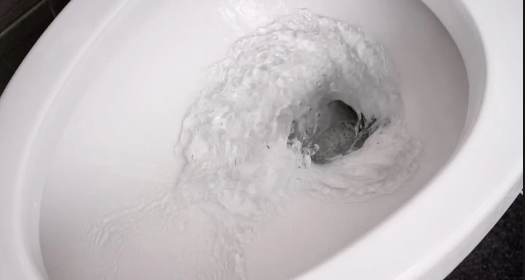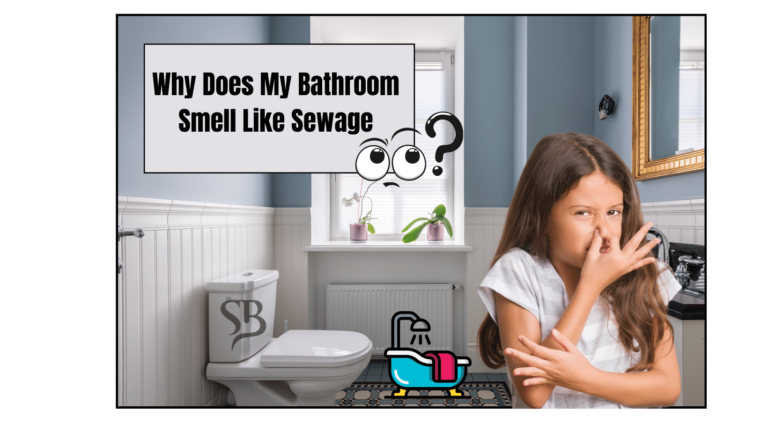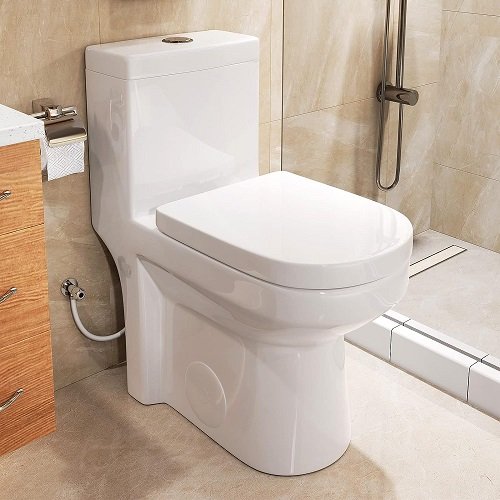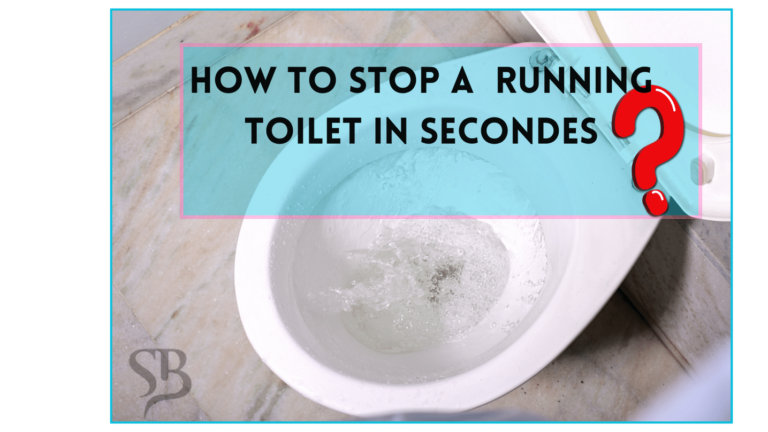If your toilet bowl slowly loses water after a flush, there is probably a leak in the bowl or more critical issues down the drain.
There are a couple of other reasons a toilet may be losing water — for instance, the air vent in the bowl may be blocked.
It’s common to have a clogged air vent, causing the water to make a gurgling sound when you flush the toilet. Sometimes your toilet bowl will stop working altogether, and you have to either fix it or get a new one.
Why Your Toilet Bowl Slowly Loses Water
Before fixing the toilet, you must first identify the cause of the problem. Whichever the situation, you’ll need a unique approach to handling it. Here are some possible causes of toilet bowls losing water and how to fix them:
1. Cracks in Your Toilet Bowl
Cracks in the toilet bowl are always possible, particularly if you have a worn-out toilet. It’s easy to tell if a toilet is cracked because it leaks and leaves puddles on the bathroom floor.
Leaks from a leaking toilet can cause serious problems with the performance of your toilet, your bill, and the environment. But if you know what is leaking, it will be easy to repair the problem.
Unfortunately, it’s harder to find leaks in toilet bowls that are very deep. If you can’t locate the exact source, consider hiring a skilled plumber to unearth and fix the problem.
2. Clogs in Your Toilet Air Vent
When you use the toilet, plenty of wastewater flows down the drains into the sewer system. When you flush the toilet, you are causing air to move through waste pipes. Air flows through the toilet bowl in a low-pressure condition, and vents help to balance the pressure.
Unfortunately, vents collect debris over time, especially ones situated on the roof. Birds, especially, can nest inside vents with a large openings. Leaves from trees can also clog vents. The toilet vent will clog up over time if it isn’t cleaned yearly. This affects the pressure balance within the waste outlet, causing your bowl to lose water continuously.
https://youtu.be/8gaYVVOllJg?si=-zhHfbSYcF1H-jE-
How to Detect the Causes of Low Water Levels
If it’s hard to tell whether your toilet is leaking from its base or not, you will have to try doing a simple test to find out the source of the problem. It only requires a few easy steps to identify the cause of the low water level in your toilet tank.
Step 1: Make sure the Water in the Cistern is Full
Open up the tank to see if the water is still leaking from the bottom of it. Now turn on the water. If the water starts to flow, take note of any guggling sound.
Step 2: Turn On All the Faucets in Your Bathroom to the Maximum.
You must now turn all the faucets in the bathroom onto the maximum setting. Twist the knobs in the faucets clockwise to allow water to flow freely.
Step 3: Listen if the Water Guggles When Running.
When you turn on the tap and water starts to flow, pay attention to the gurgling sound it makes when it passes through the toilet. If that happens, that means something is leaking. Suppose you find out that the water in your tank is running low, and you can’t hear the gurgling sound. Go to the fourth step.
Step 4: Turn Off All the Faucets in Your Bathroom
Now, turn off the water by closing all the faucets connected to your bathroom. This will prevent water from flowing down the pipes and into your toilet bowl.
Step 5: Check the Water Level
Start by marking the toilet’s water level with a marker, and you can leave the toilet running for one hour or so. Wear gloves that cover your hands to protect them from dirt, moisture, and other foreign objects.
If the water level is lower than the mark after a few hours, there is a problem with the toilet system. Check if the water level in the bowl is slowly going down after the faucets are turned off. If it does, something must be causing the water level to go down, probably a crack in the bowl.

How Do You Fix a Toilet Bowl That Keeps Losing Water?
Once you’ve identified the cause of your toilet bowl losing water, it’s time to fix it to raise the water level to normal height.
Option 1: Repair the Broken Bowl
It is unnecessary to replace the toilet bowl if there is just a tiny crack. To seal the crack, start disconnecting the water supply to your toilet and draining all the water from the bowl using towels or a bucket.
After you drain the tank, use the right sealant to seal off any cracks.
If you need to replace the toilet bowl, carefully disconnect the hose from the main drain to the cistern. Unscrew the bolts that secure the tank to the floor by rotating them counterclockwise.
Use pliers to remove a few screws that hold the toilet base; also, use pliers to untighten the caps. Using your fingers, move the toilet bowl slowly to the side and dispose of the old toilet bowl appropriately. Repeat these steps in reverse to install your new toilet bowl. Choose carefully when buying a new toilet bowl. It must be the same size as the toilet bowl you have removed.
Option 2: Clean the Air Vent
Cleaning air vents is easier than replacing a clogged toilet bowl, but it can be much more hazardous.
You must be very cautious when cleaning the air vent on your roof.
When the vent is clear, attach a hose to the spout to provide water to flush the pipes. You may need someone to help you because it’s difficult to handle the equipment from the roof.
Push a hose down into the clogged vent to flush some water down.
If water leaks out of a clogged vent, you might be surprised to find that it spills out lots of debris from your vent. If you see that, it means you had a huge clog in your vent.
But if the water level in the toilet tank is too low to flush wastewater, you may need to use a toilet auger to get rid of the clog.
Insert a toilet auger into the drain and turn the handle on the toilet auger to push the clog out. When you push the auger into the vent, it digs into the clog. After you get rid of the clog, you can pour some more water so that you clean your vent.
Other Problems with Your Toilet Bowl
Besides a cracked bowl and clogged vent pipe, many other possibilities could cause the water level in the toilet bowl to be low. They include:
1. Water in Your Toilet Tank is Too Low
Often, there isn’t enough water in the tank to flush the waste tank. If the toilet tank water is low, you can easily fix the fill valve. Here is what to do:
- Open your tank lid
- Locate the screw that holds the fill valve while closed.
- Turn the screw in the fill valve clockwise to raise the valve handle on the tank.
A simple valve determines the level at which water is released into the toilet tank. Lifting the valve allows a few more gallons of water into the tank, which will allow some more water into the bowl.
2. Fill Tube Isn’t Working
A fill tube is just a long tube that goes inside the toilet tank and is often damaged after years of use. It may detach from the overflow tube or get damaged after working for years.
If that happens, you will not have enough water in the toilet to fill the bowl.
The obvious solution is to change or repair the fill tube. It is as easy as removing the old fill tube and putting a new one in the tank.
FAQs
How can I tell if I have a leaking toilet wax ring?
Water leaking from the base of your toilet indicates that the wax ring is failing. You may notice that the toilet looks unusual if you notice that a loose wax ring is loose in the bottom of your toilet.
Can my toilet lose water without being flushed?
A leak only occurs when the toilet is flushed, but it could also be caused by a worn-out wax seal or loose toilet mounting bolts.
Wrapping Up
If you notice that your toilet is slowly losing water, you must fix it early enough to avoid future problems. Take some time and think about what might be causing the problem.
If you rule out the source of the problem, then it may take a little bit of time and elbow grease, but it is worth it because you won’t have to hire a plumber.
But if you get stuck or don’t know where to start, always call a plumber to come and help.







